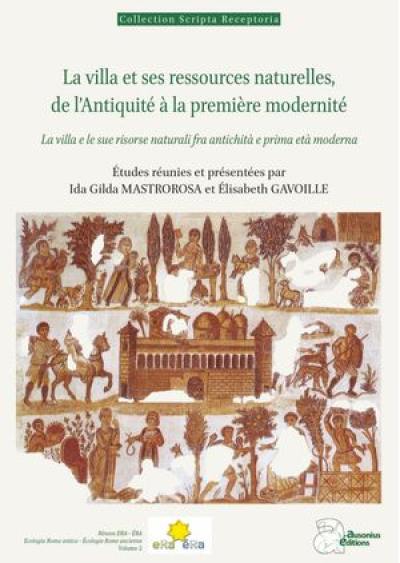
Fiche technique
Format : Broché
Nb de pages : 264 pages
Poids : 630 g
Dimensions : 17cm X 24cm
ISBN : 978-2-35613-607-7
EAN : 9782356136077
Quatrième de couverture
Dans le sillage des travaux fondateurs de Paolo Fedeli (La natura violata. Ecologia e mondo romano, 1990) s'est constitué le réseau de recherche franco-italien ERA (Ecologia Roma Antica), pour explorer les rapports entre humain et nature dans l'Antiquité romaine, ainsi que leur transmission jusqu'à la première modernité. Le présent ouvrage, issu du IIe colloque ERA (2020), poursuit cette série d'études en réunissant onze contributions sur les évolutions et les héritages de la villa romaine comme résidence rurale et centre d'exploitation des ressources naturelles, du Haut-Empire à la Renaissance, croisant littérature, histoire et archéologie.
En partant de Sénèque qui valorise la fonction productive, on mesure ensuite les changements de perspective dans l'Antiquité tardive : demeure privilégiée conjuguant locus amoenus, otium litteratum et sociabilité raffinée dans la lignée d'un Pline le Jeune, la villa devient refuge aristocratique loin de la ville mais aussi, dans les textes chrétiens, lieu de retraite ascétique, et l'on perçoit ici la continuité avec le monastère, tout à la fois espace de vie, de méditation, de travail de la terre et de bon usage de l'eau.
L'interaction avec l'environnement naturel, les modalités d'occupation et les transformations de certains domaines sont mises en évidence dans des études archéologiques (notamment sur les vestiges du lac de Garde et de Sicile, et sur le cas particulier d'Aiano), ou grâce à la cartographie historique.
Le rôle de la villa romaine dans le processus d'anthropisation du paysage rural se voit prolongé dans l'essor au Moyen Âge d'une économie montagnarde comme celle du Casentino, reposant sur l'exploitation de l'eau et du charbon. Enfin le modèle de la villa entre à la Renaissance dans l'inspiration de traités d'agronomie, tels ceux d'Agostino Gallo et de Prospero Rendella.
Inspired by Paolo Fedeli's seminal work La natura violata. Ecologia e mondo romano (1990), the Franco-ltalian research network ERA (Ecologia Roma Antica) was set up to explore relations between humans and nature in Roman Antiquity and how they continued on down to the early modern period. The present work, derived from the 2nd ERA conference (2020), extends this series of studies by bringing together eleven contributions on the development and legacy of the Roman Villa as a rural residence and a hub for the exploitation of natural resources from the Early Empire until the Renaissance. Its inputs come from literature, history and archaeology.
Beginning with Seneca and his focus on the villa's productive function, changes of perspective during Late Antiquity are examined : from a privileged dwelling which combined locus amoenus, otium litteratum and refined sociability in the tradition of Pliny the Younger, the villa became an aristocratic refuge away from the city but also, according to Christian writings, a place for ascetic retreat, thus establishing continuity with the monastery as a space for living, meditating and working the land through a sensible use of water.
Interaction with the natural environment and the organisation and transformation of a number of estates are highlighted in archaeological studies (focusing notably on remains beside Lake Garda and in Sicily, and on the case of Aiano) or by historical maps.
The role of the Roman villa in the anthropisation of the rural landscape continued during the Middle Ages with the development of the mountain economy, relying on the exploitation of water power and charcoal, as shown by the example of the Casentino. Finally, the villa served as a model in Renaissance times, influencing agronomic treatises such as those by Agostino Gallo and Prospero Rendella.





